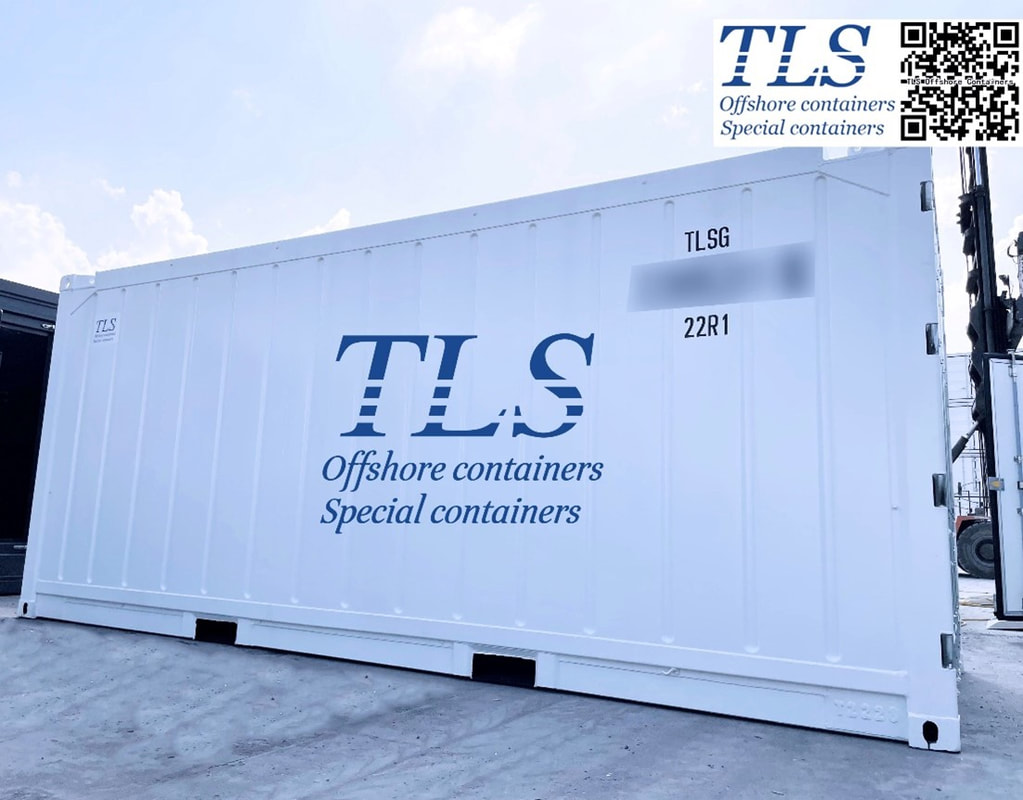|
Offshore shipping containers are widely used for the transportation and hoisting of goods or equipment between offshore facilities and ships in harsh environments with high temperature, high humidity, and high salt spray. Therefore, there are extremely high requirements for the anti-corrosion of the surface of the offshore container. The coating process steps of TLS are as follows: 1. Preprocessing Remove the oxide scale, rust, grease, dirt, and other attachments on the surface of the exposed steel structure to ensure the anti-corrosion performance of the coating; zinc-rich primers are applied automatically on the assembly line after the steel is shot-blasted. It temporarily protects the surface of freshly shot steel, preventing it from rusting in the gaps made during the container's manufacture. 2. Shot-blasted the whole container Before painting, the surface of the weld and the heat sensitive area of the weld should be shot-blasted. The surface of the steel structure should be free of burrs, bumps, dust, dirt, no painting, sharp edges, and all rough-cut edges should be ground to a radius of at least 2mm; 3. Pre-coating Pre-coating is applied to areas that are not easy to coat, including, but not limited to, the edges of steel plates, welds, corners, bolt holes, beam edges, and other areas that are difficult to paint. 4. Spray Each coat should be applied evenly over the entire surface, and defects such as missing paint, sags, and drips must be avoided. And each coating should contain no pinholes, blisters, and leaks. 5. Drying: Speed up the curing process. TLS uses environmentally friendly water-soluble paints, and the coating operators have relevant technical certifications. TLS containers are not prone to corrosion, paint failure, fading and discoloration which can make the container work better for its use value. Comments are closed.
|
Archives
July 2024
Categories
All
|
- Home
-
Containerised solutions
- Intelligent pressurised container | MUD logging cabin
- Battery energy storage system (BESS) container
- Flexible grid tied battery storage system
- Laboratory container | workshop container | Equipment containers
- Temporary refuge shelter | Toxic gas refuge | Safe haven
- Offshore accommodation cabin | office container
- Reefer container | Refrigerated container
- Intelligent waste water treatment container
- Fresh water generator container
- Cargo Containers
- Product photos & videos
- News & Blogs
- Contact us
|
Featured products
Intelligent pressurised container Temporary refuge (TR) shelter, toxic gas refuge (TGR) Battery energy storage system (BESS) container Containerised waste water treatment plant Fresh water generator container Reefer container Laboratory container, Workshop container Accommodation container Offshore closed container |
All Rights Reserved 2020 © TLS Offshore Containers / TLS Energy
|

